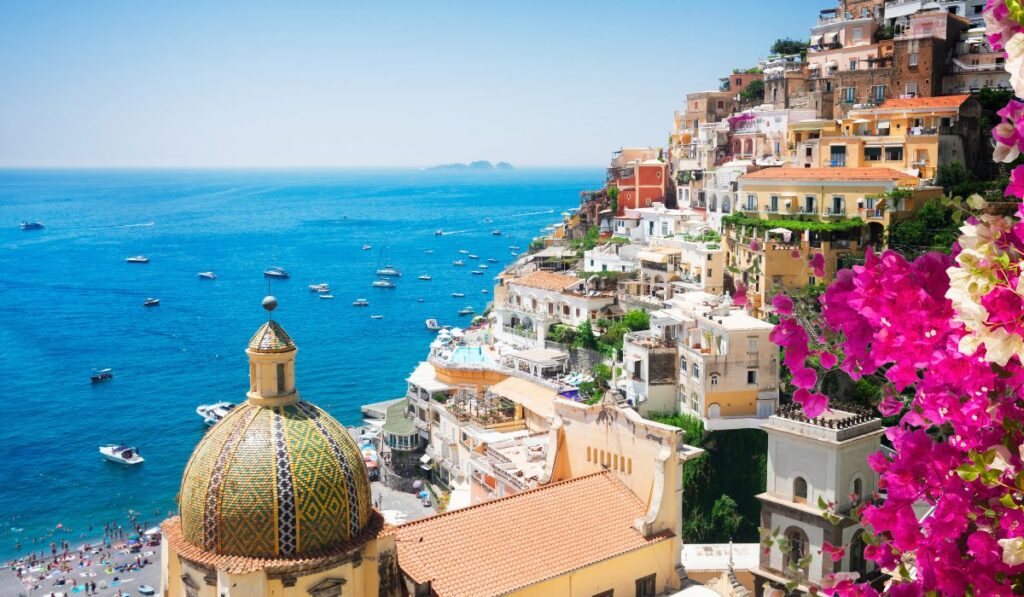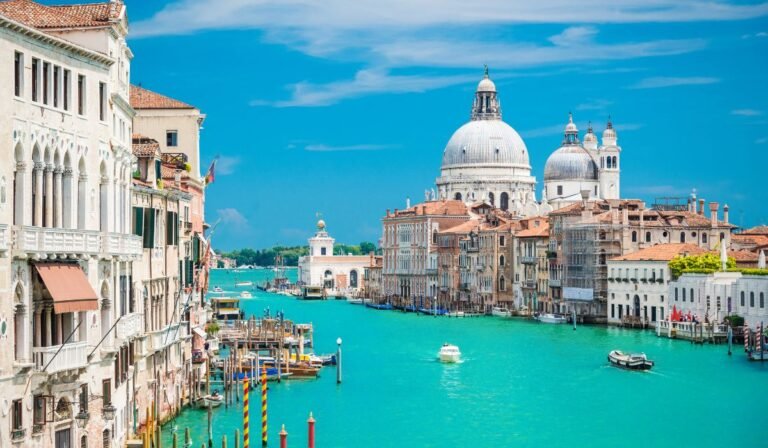Planning a Trip to Italy 2024:
Italy is a wonderful place loaded with history, art, and culture, inviting travelers to have amazing experiences. From the old ruins in Rome to the sunny vines in Tuscany, Italy is a blend of beautiful landscapes, flavors, and traditions. Whether you’re into art or history, or just love good food and wine, Italy serves a wide range of interests.
Ideal Time to Explore Italy:
When it’s best to visit Italy just depends on what you like. If you’re looking for warm weather and sunny skies, the seasons of spring (April-May) and autumn (September-October) are ideal. These months offer pleasant temperatures, less crowd, and lower prices than the peak summer months. If you don’t mind the high temperature and want to experience Italy’s summer festivals, then July and August are the time to go. However, be prepared for high prices and large crowds.
How Long to Stay in Italy?
Italy is a broad country with so many opportunities to explore, so you’ll need at least a week to experience its highlights. However, if you want to explore deeper into Italy’s regions and culture, two weeks or more would be ideal.
Planning Your Journey:
With so many options to choose from, planning your tour can be a scary task. But don’t worry, we’re here to help. Here are a few tips to get you started:
- Northern Italy: If you’re interested in art and history, then Northern Italy is the place for you. Start in Milan, the fashion capital of Italy, and then head to Venice, a city that’s like a living work of art. From there, make your way to Florence, home to the masterpieces of Michelangelo and Botticelli. Finally, end your trip to Rome, the Eternal City, where you can explore the Colosseum, the Vatican City, and the Trevi Fountain.
- Central Italy: Central Italy is home to some of Italy’s most famous landscapes, including the rolling hills of Tuscany, the rugged mountains of Umbria, and the pleasing villages of the Cinque Terre. Spend a few days exploring the vineyards and olive groves of Tuscany, then take a day trip to the medieval town of Assisi. Finally, hike along the scenic trails of the Cinque Terre, where you’ll be rewarded with stunning views of the Mediterranean Sea.
- Southern Italy: Southern Italy offers a mix of differences and variations, with ancient cities, stunning beaches, and a rich culinary tradition. Start in Naples, a vibrant city with a UNESCO-listed historic center. Then, move to the Amalfi Coast, where you’ll find some of Italy’s most beautiful villages and beaches. Finally, end your trip to Sicily, an island with a fascinating history and a unique culture.

Cuisine:
- Italy is a food lover’s paradise, with a diverse cuisine that varies from region to region.
- Italy is famous for its diverse pasta dishes. From spaghetti to lasagna, each region boasts its unique pasta varieties, often paired with flavorful sauces and fresh ingredients.
- Pizza, a true Italian icon. Crispy crusts, rich tomato sauce, and a variety of toppings make each pizza a mouthwatering experience. Discover regional specialties that reflect local tastes.
- Satisfy your sweet craving with Italian gelato. Creamier than ice cream, gelato comes in a different variety of flavors, from classic chocolate and vanilla to colorful fruit blends. Enjoy this frozen delight as you stroll through charming Italian streets.
- Experience the Italian coffee culture with a strong and aromatic espresso. Learn about different coffee styles, from the bold espresso to the frothy cappuccino, and savor the rich flavors that make Italian coffee a worldwide favorite.
Culture:
- Italian culture is a dynamic canvas painted with an artistic legacy, from Renaissance masterpieces to modern creations showcased in museums and open-air galleries.
- The zest for life, known as “La Dolce Vita,” defines the passionate Italian lifestyle, emphasizing simple pleasures like good food and leisurely moments.
- Diverse regional traditions contribute to a dynamic cultural landscape, celebrated through colorful festivals and religious ceremonies.
- Italy’s architecture, blending ancient and modern, tells a rich historical tale as you wander through charming streets.
- The festive spirit is alive year-round, with events like Carnival in Venice and the historic Palio in Siena, showcasing Italy’s cultural diversity and love for celebration.
Transportation:
Italy has a well-developed transportation system, so getting around is easy and efficient. Trains are the most convenient way to travel between major cities, while buses and ferryboats can take you to smaller towns and villages. If you’re planning on doing a lot of exploring, then renting a car is a good option.
Accommodation:
Italy has a variety of places to stay that fit every budget, from budget-friendly hostels to luxurious hotels. If you’re looking for a more reliable experience, then consider staying in an agriturismo, a farm that offers bed and breakfast accommodations.

Planning Tips:
Here are a few more tips to help you plan your trip to Italy:
- Book your flights and accommodations in advance, especially if you’re traveling during the peak season.
- Get a travel insurance policy to protect yourself against unexpected events.
- Learn a few basic Italian phrases.
- Pack light and comfortable shoes.
- Be prepared for crowds, especially in popular tourist destinations.
Frequently Asked Questions:
| What are the must-visit places in Italy? | Popular destinations include Rome, Florence, Venice, and the Amalfi Coast. |
| When is the best time to visit Italy? | Spring and fall offer pleasant weather, but it depends on personal preferences and the regions you visit. |
| Do I need a visa to travel to Italy? | It depends on your nationality; check with the Italian embassy or consulate. |
| What’s the currency used in Italy? | The Euro (EUR) is the official currency. |
| How can I get around in Italy? | Options include trains, buses, and rental cars. In cities, walking and public transport are common. |
| What’s the local language in Italy? | Italian is the official language, but English is widely spoken in tourist areas. |
| Is it safe to drink tap water in Italy? | Yes, tap water is safe to drink in most places. |
| What’s the tipping culture in Italy? | Tipping is not as common as in some other countries, but rounding up the bill or leaving a small tip is appreciated. |
| What should I pack for my trip to Italy? | Comfortable shoes, weather-appropriate clothing, adaptors, and essentials like travel documents. |
| How can I experience authentic Italian cuisine? | Venture beyond tourist areas, try local trattorias, and ask locals for recommendations. |
| Are credit cards widely accepted in Italy? | Credit cards are commonly accepted, but it’s advisable to have some cash, especially in smaller towns. |
| Can I use my mobile phone in Italy? | Venture beyond tourist areas, try local trattorias and ask locals for recommendations. |
| Do I need travel insurance for Italy? | While not mandatory, it’s highly recommended to have travel insurance for medical and unexpected events. |






